There’s something magical about stepping outside your door and plucking fresh basil for tonight’s pasta or snipping mint for your morning tea. The aroma alone can transport you to a place of pure satisfaction, knowing you’ve grown these treasures with your own hands. Yet, many aspiring gardeners feel overwhelmed by the thought of starting their first herb garden.
Starting an herb garden doesn’t require vast outdoor spaces or expert knowledge. Whether you have a sprawling backyard or just a sunny windowsill, growing your own herbs can become one of life’s most rewarding experiences. These aromatic plants offer more than just culinary enhancement—they provide natural remedies, household cleaning solutions, and even beauty treatments.
Why Every Home Needs an Herb Garden
Creating your own herb garden represents more than just a gardening project; it’s an investment in your health, wallet, and lifestyle. Fresh herbs contain higher concentrations of essential oils and nutrients compared to their dried counterparts. Plus, having herbs for beginners readily available encourages more creative cooking and healthier eating habits.
The financial benefits are equally compelling. A single packet of fresh herbs from the grocery store often costs more than an entire herb plant that will provide harvests for months. When you multiply this across multiple varieties, the savings become substantial.
Indoor Herb Garden Solutions
Windowsill Herb Gardens
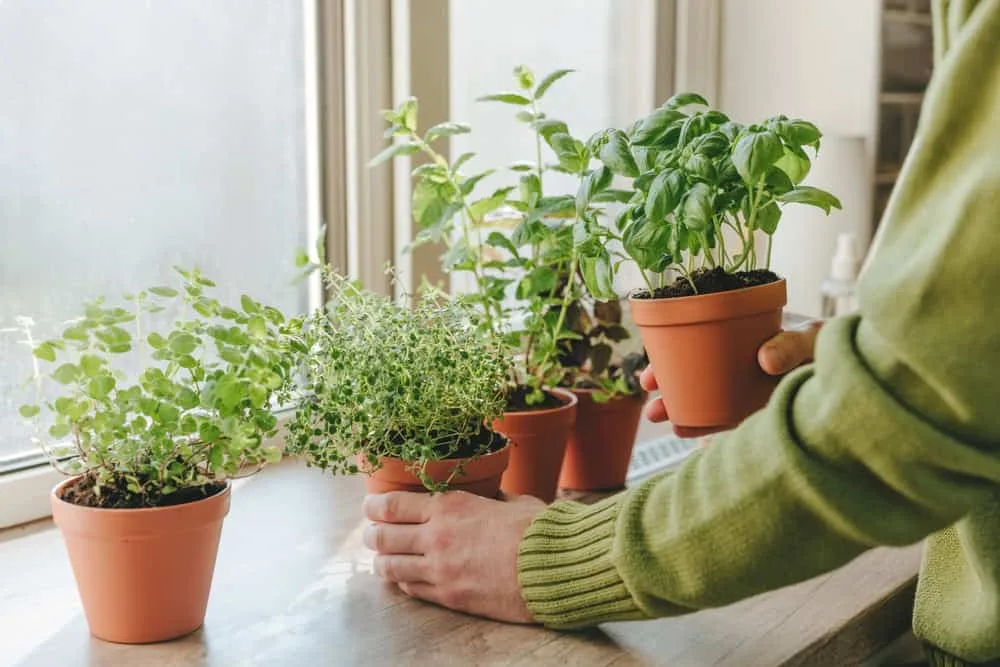
Your kitchen windowsill might be the perfect spot for your first herb garden. South-facing windows receive the most light, making them ideal for sun-loving herbs like basil, oregano, and thyme. Even if you don’t have ideal lighting conditions, several herbs adapt well to indoor growing conditions.
Container gardening for herbs works beautifully indoors. Use individual pots for each herb variety, or create attractive arrangements with window boxes. Ensure proper drainage by placing pebbles at the bottom of containers without drainage holes, though pots with drainage holes are always preferable.
Hydroponic Herb Growing
For those interested in modern gardening techniques, hydroponic herb growing offers year-round production with minimal space requirements. This soil-free method allows herbs to grow in nutrient-rich water solutions, often producing faster growth and higher yields than traditional soil gardening.
Hydroponic systems range from simple mason jar setups to sophisticated automated units. Beginners can start with basic water culture systems using herbs like basil, cilantro, and lettuce, which root easily in water.
Vertical Growing Systems
Maximize your indoor space with vertical herb garden designs. Wall-mounted planters, hanging containers, and tiered stands allow you to grow multiple herb varieties without consuming valuable counter space. These systems work particularly well for compact herbs like parsley, chives, and small basil varieties.
Outdoor Herb Garden Designs
The Herb Spiral: A Permaculture Masterpiece
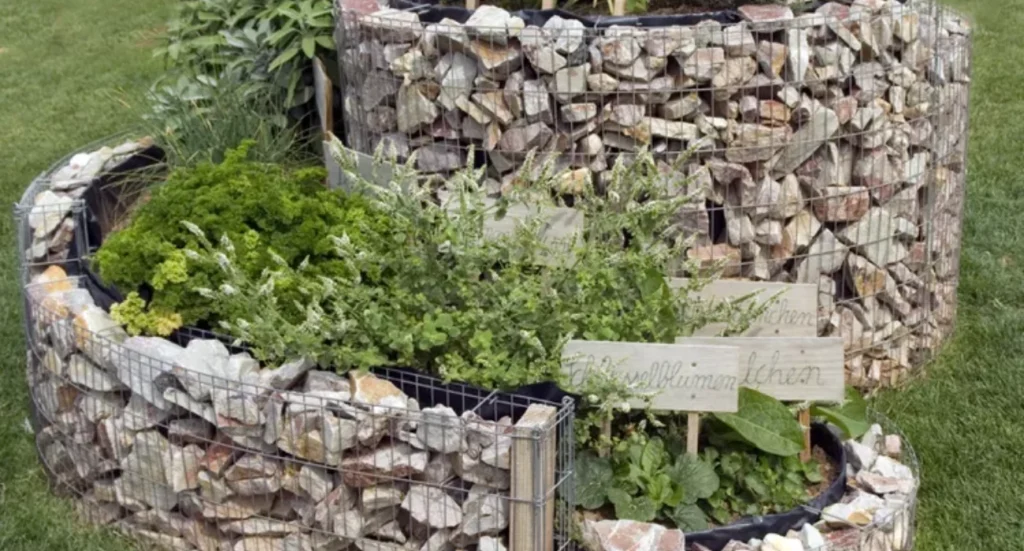
One of the most ingenious herb garden ideas comes from permaculture principles: the herb spiral. This three-dimensional design creates multiple microclimates within a compact space, allowing you to grow herbs with different water and sunlight requirements in the same area.
The spiral design places Mediterranean herbs like rosemary and lavender at the sunny, well-drained top, while moisture-loving herbs like parsley and cilantro thrive in the shadier, more protected lower areas. This garden design maximizes growing space while creating an attractive focal point.
Raised Bed Herb Gardens
Raised beds offer excellent drainage and soil control—two critical factors for successful herb gardening. These elevated growing spaces warm up faster in spring, extend the growing season, and make maintenance easier on your back and knees.
When planning raised bed herb gardens, group plants with similar water and sunlight requirements together. Create separate sections for perennial herbs like rosemary and sage, and annual herbs like basil and cilantro.
Container Herb Gardens
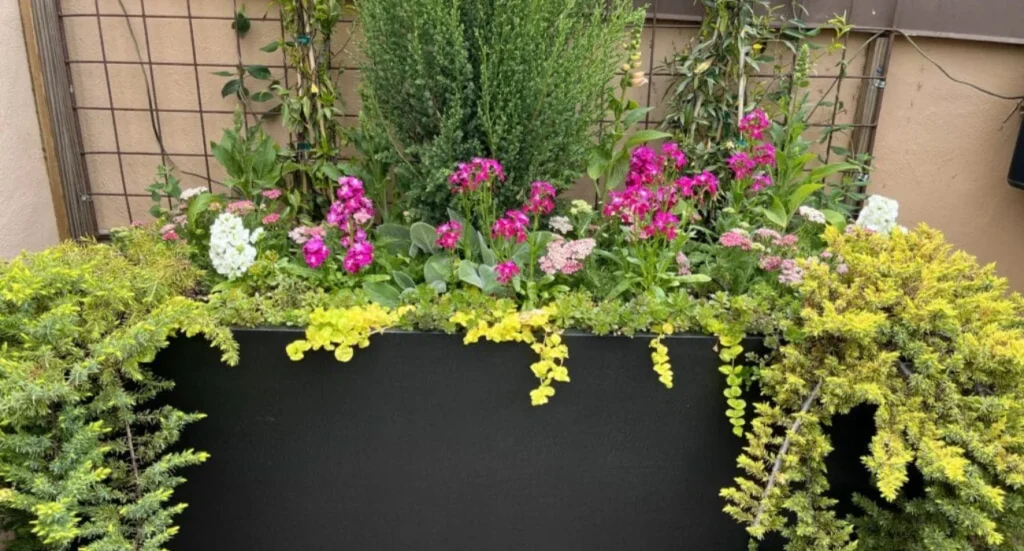
Container gardening provides ultimate flexibility for outdoor herb growing. Pots can be moved to optimize sunlight exposure, protected from extreme weather, and easily rearranged for aesthetic appeal. Large containers work best, as they provide better root space and require less frequent watering.
Choose containers with drainage holes and use high-quality potting soil rather than garden soil, which can become compacted in containers. Terra cotta pots work well for Mediterranean herbs that prefer drier conditions, while plastic containers retain moisture better for herbs that need consistent watering.
Integrating Herbs Throughout Your Garden
Companion Planting with Herbs
Companion planting creates beneficial relationships between different plants, and herbs excel as companion plants. Basil planted near tomatoes not only provides convenient harvesting but also helps repel pests and may improve tomato flavor.
Other successful herb companion planting combinations include:
- Rosemary with beans and carrots
- Oregano with peppers and eggplant
- Chives with roses and fruit trees
- Parsley with asparagus and corn
Herbs as Ground Cover
Many herbs make excellent ground cover alternatives to traditional lawn grass. Creeping thyme creates a fragrant carpet that releases aromatic oils when walked upon. Chamomile provides a soft, apple-scented ground cover that tolerates light foot traffic.
These herb ground covers require less water than traditional lawns and provide habitat for beneficial insects while adding culinary and medicinal value to your landscape.
Marginal Space Herb Gardening
Don’t overlook marginal spaces in your garden design. Herbs often thrive in areas where other plants struggle, such as rocky soil, slopes, or between paving stones. These challenging spots can become productive herb-growing areas with the right plant selection.
Creeping oregano, wild marjoram, and Roman chamomile excel in pathway cracks and rock gardens. These hardy herbs add fragrance and functionality to otherwise unused spaces.
Combining Herbs for Success
Understanding Herb Growing Requirements
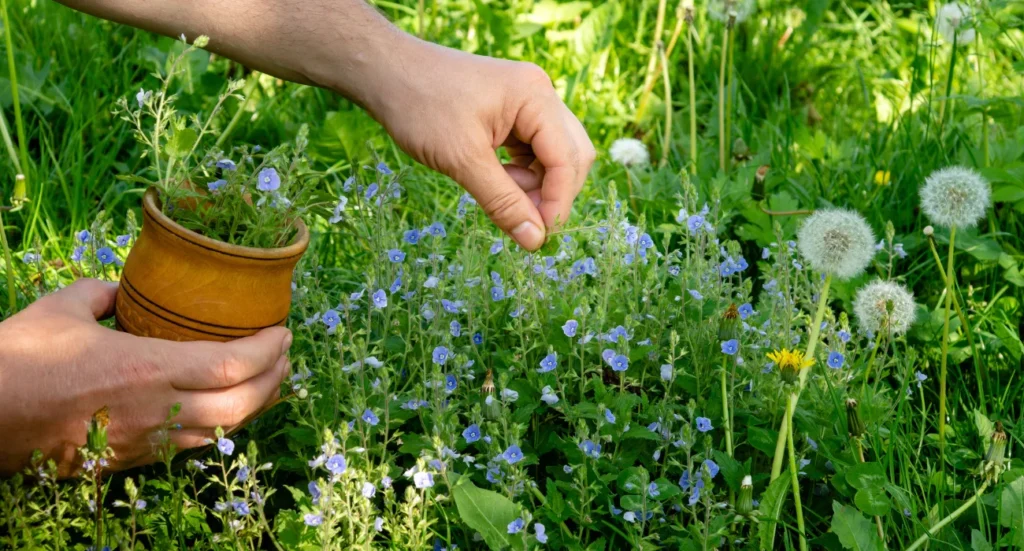
Successful herb gardening requires understanding each plant’s specific needs. Group herbs with similar water, sunlight, and soil requirements together to simplify care and maximize success.
Mediterranean herbs like rosemary, thyme, and oregano prefer well-drained, alkaline soil and full sun. These drought-tolerant plants often struggle in overly moist conditions.
Moisture-loving herbs such as basil, cilantro, and parsley need consistent watering and benefit from partial shade in hot climates. These herbs often bolt (go to seed) quickly in extreme heat.
Seasonal Planning
Plan your herb garden for continuous harvests throughout the growing season. Cool-season herbs like cilantro and parsley can be planted early in spring and again in fall. Warm-season herbs like basil and oregano should be planted after frost danger passes.
Succession planting ensures continuous harvests of quick-growing herbs. Plant new cilantro seeds every two weeks for a steady supply, as this herb tends to bolt quickly in warm weather.
Essential Herbs for Beginners
Foolproof Starter Herbs
Some herbs are particularly forgiving for beginners in gardening. These reliable varieties establish easily and provide generous harvests with minimal care:
Basil grows quickly and provides abundant harvests. Pinch flowers regularly to encourage leaf production and prevent the plant from becoming bitter.
Chives are virtually indestructible perennials that multiply readily. Their mild onion flavor complements many dishes, and their purple flowers are both beautiful and edible.
Mint grows enthusiastically but requires containment to prevent it from overtaking other plants. Grow mint in containers or install root barriers to control its spread.
Parsley provides vitamin-rich leaves throughout the growing season. Both flat-leaf and curly varieties are easy to grow and add fresh flavor to countless dishes.
Perennial vs. Annual Herbs
Understanding the difference between perennial and annual herbs helps with garden planning. Perennial herbs like rosemary, sage, and thyme return year after year, providing long-term value and requiring less replanting.
Annual herbs like basil, cilantro, and dill complete their life cycle in one season but often provide intense flavors and generous harvests during their growing period.
Maximizing Your Herb Garden’s Potential
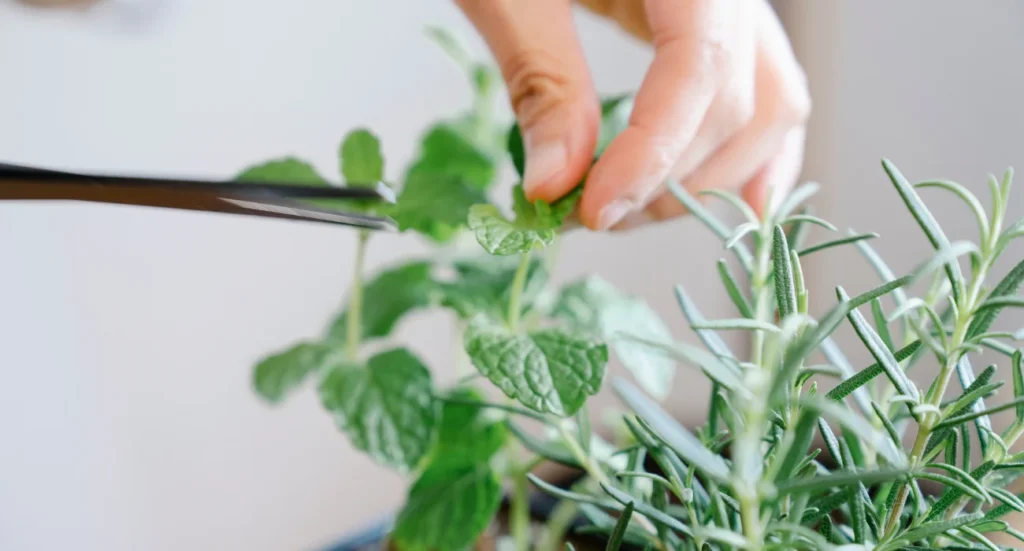
Harvesting Techniques
Proper harvesting encourages continued growth and maximizes your herb garden’s productivity. Harvest herbs in the morning after dew has dried but before the day becomes too hot, when essential oils are at their peak concentration.
Cut herbs just above a leaf node to encourage branching and continued growth. Regular harvesting keeps plants productive and prevents them from becoming woody or bitter.
Preservation Methods
Extend your herb garden’s bounty through proper preservation techniques. Dry herbs by hanging small bundles in a warm, dry, well-ventilated area away from direct sunlight. Freeze herbs in ice cube trays with water or oil for convenient portioning.
Some herbs, like basil, can be made into pesto or herb butter and frozen for winter use. Others, like rosemary and thyme, dry well and maintain their flavor for months when stored properly.
Common Mistakes to Avoid
Overwatering Issues
One of the most common mistakes in herb gardening is overwatering. Many herbs, particularly Mediterranean varieties, prefer slightly dry conditions and can develop root rot in constantly moist soil.
Check soil moisture by inserting your finger into the soil. Most herbs need watering when the top inch of soil feels dry. Containers dry out faster than garden beds and require more frequent monitoring.
Improper Plant Spacing
Overcrowding herbs reduces air circulation and increases disease risk. Follow spacing recommendations on plant tags, and remember that herbs spread as they mature. Proper spacing also ensures each plant receives adequate sunlight and nutrients.
Neglecting Soil Quality
Herbs generally prefer well-draining soil with good organic matter content. Heavy clay soils can be improved with compost and coarse sand, while sandy soils benefit from organic matter to improve water retention.
Most herbs prefer slightly alkaline soil with a pH between 6.0 and 7.0. Test your soil and amend as necessary to create optimal growing conditions.
Seasonal Care and Maintenance
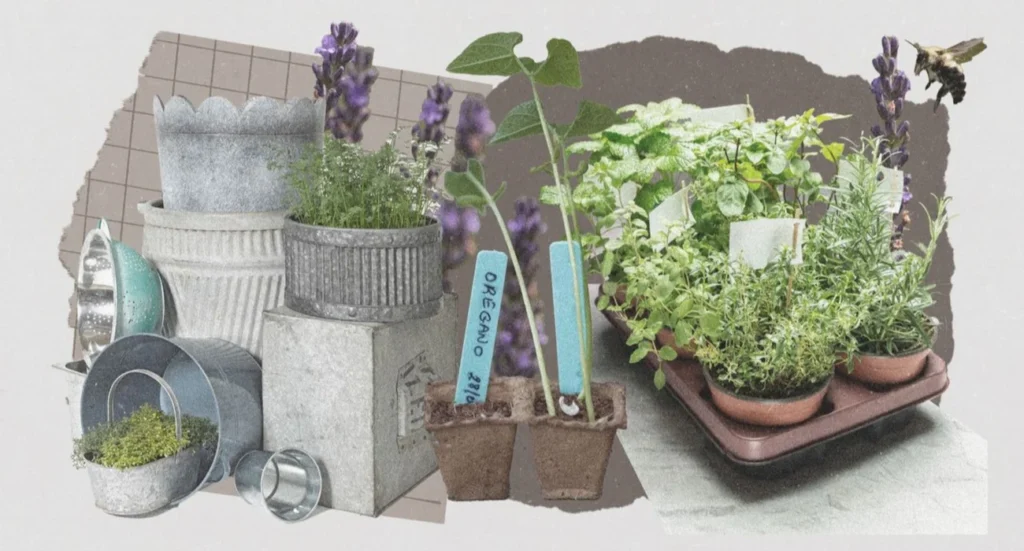
Spring Preparation
Start your herb garden season by cleaning up perennial herbs and preparing planting areas. Remove dead growth from perennial herbs and divide overcrowded clumps to maintain vigor.
Prepare soil by adding compost and ensuring proper drainage. Start seeds indoors for warm-season herbs that will be transplanted after frost danger passes.
Summer Management
Summer care focuses on watering, harvesting, and pest management. Mulch around herbs to conserve moisture and suppress weeds, but keep mulch away from plant stems to prevent rot.
Monitor for pests like aphids and spider mites, which can be controlled with insecticidal soap or by encouraging beneficial insects with flowering herbs.
Fall and Winter Preparation
Prepare tender herbs for winter by taking cuttings or digging up plants to grow indoors. Harvest and preserve herbs before the first frost destroys tender growth.
Protect perennial herbs with mulch in cold climates, but avoid covering crowns directly, which can encourage rot. Some herbs, like rosemary, may need winter protection or indoor growing in harsh climates.
Frequently Asked Questions
1. What are the easiest herbs to grow for absolute beginners?
The most beginner-friendly herbs include basil, chives, parsley, and mint. These herbs tolerate some neglect, grow quickly, and provide generous harvests. Chives are particularly foolproof as perennials that return year after year with minimal care.
2. Can I grow herbs indoors year-round without special equipment?
Yes, many herbs grow successfully on sunny windowsills without special equipment. Basil, parsley, chives, and cilantro adapt well to indoor conditions. South-facing windows provide the best light, though grow lights can supplement natural light in darker spaces.
3. How much space do I need for a productive herb garden?
A productive herb garden can fit in surprisingly small spaces. A 4×4 foot raised bed can accommodate 8-12 herb plants, while a windowsill can support 4-6 small containers. Even a single large container can provide enough herbs for most cooking needs.
Growing your own herbs transforms both your cooking and your connection to nature. Whether you start with a single pot of basil on your windowsill or design an elaborate outdoor herb garden, you’re embarking on a journey that rewards patience with abundance and care with flavor. The most important step is simply beginning—your taste buds will thank you for years to come.

